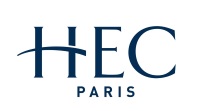No 1261: The Effects of Linguistic Devices on Consumer Information Processing and Persuasion: A Language Complexity × Processing Mode Framework
L. J. Shrum (), Tina M. Lowrey () and Ruth Pogacar ()
Abstract: People—be they politicians, marketers, job candidates, product reviewers, bloggers, or romantic interests—often use linguistic devices to persuade others, and there is a sizeable literature that has documented the effects of numerous linguistic devices. However, understanding the implications of these effects is difficult without an organizing framework. To this end, we introduce a Language Complexity × Processing Mode Framework for classifying linguistic devices based on two continuous dimensions: language complexity, ranging from simple to complex, and processing mode, ranging from automatic to controlled. We then use the framework as a basis for reviewing and synthesizing extant research on the effects of the linguistic devices on persuasion, determining the conditions under which the effectiveness of the linguistic devices can be maximized, and reconciling inconsistencies in prior research.
Keywords: Linguistics; Attitudes and Persuasion; Automatic and Controlled Processes; Language
JEL-codes: M31
60 pages, First version: April 8, 2018. Revised: May 3, 2018.
Full text files
papers.cfm?abstract_id=3158683Full text
Questions (including download problems) about the papers in this series should be directed to Antoine Haldemann ()
Report other problems with accessing this service to Sune Karlsson ().
RePEc:ebg:heccah:1261This page generated on 2025-06-10 11:14:56.

